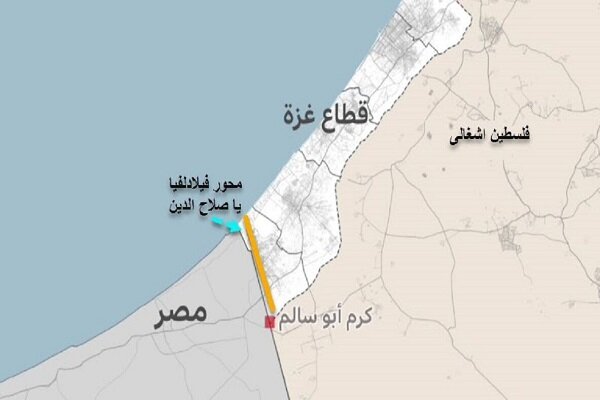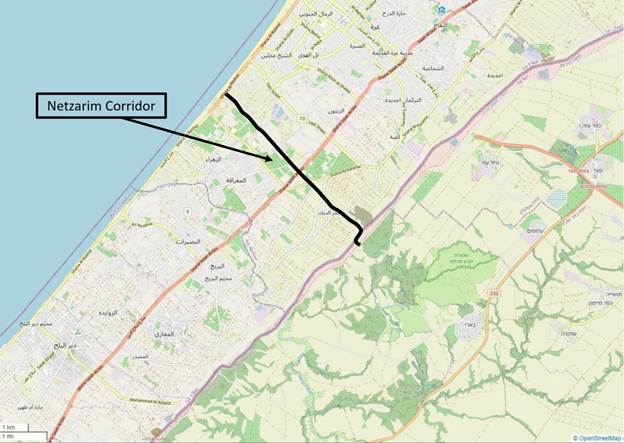Why doesn’t Netanyahu withdraw from the axes of Philadelphia and Netsarim?

Mehr News, International Group: With the start of a new round of ceasefire talks in Doha, many analysts hoped that due to the increase The activity of mediator actors and at the same time the need of the region to reduce the fire of war in Gaza, Israel accepted the ceasefire agreement and Netanyahu found another way to survive in power. Last week, William Burns, Brett McGurk, Mohammed bin Abdulrahman al-Thani, Abdullah bin Mohammed Al-Khalifi and Abbas Kamel gathered together on Thursday and Friday to pursue two different agendas, “ceasefire in Gaza” and “prisoner exchange”. » Take a big step towards the option of leaving the conflict in Gaza.
Apparently, in this round, according to Netanyahu’s new conditions, in the Rome meeting, the American side made a new offer to the mediation actors and the Hamas movement, which was not accepted by both sides. In other words, Washington has left the role of “mediator” and openly presents the conditions of the Israeli side in the form of American proposals in the negotiations. Accordingly, in the continuation of this note, we will try to answer the question why the Zionist army is not willing to withdraw from the border line of Philadelphia and the Netsarim corridor?
In the new round of Doha negotiations, the United States made a new proposal to the conflict parties, which according to the senior members of the Hamas movement, was a repetition of Netanyahu’s extravagant demands in another language. In the revised plan, the Israeli army forces will not withdraw from the Philadelphia axis, but only the number of military forces in this area will be reduced. Also, the control of the Rafah crossing will be handed over to the self-governing forces. Another disputed issue was the continued presence and supervision of the Zionist army on the Netsarim Corridor.
Experts believe that this path that divides Gaza into two parts, north and south, can be a prelude to the separation of different regions of Gaza and the implementation of the idea of the West Bank in this region. In a meeting with the families of Israeli prisoners, Netanyahu expressed doubts about the implementation of the ceasefire agreement with Hamas and announced that he will not withdraw from the Philadelphia and Netsarim axis under any circumstances. The insistence of the Israeli side on this “red line” and some other conditions, such as having the right to veto the freed Palestinian prisoners in the prisoner exchange process, caused the Hamas movement to announce the rejection of the American proposal for a cease-fire in Gaza by publishing an official statement. >
Netanyahu’s illogical condition is so unacceptable that even the Egyptian mediator refused to accept and convey Tel Aviv’s message to Hamas. The Egyptians opposed the Israeli proposal to deploy the regime’s military forces on the border line between Egypt and the Gaza Strip and considered this idea to be against the Camp David Agreement. Apparently, in direct conversations with the Israeli negotiating team, Cairo has emphasized that if the government of this country accepts such a plan, it must be ready for public anger and the uprising of the Egyptian people in protest against the handing over of the common border with Gaza. Before this, the government of Abdul Fattah al-Sisi had repeatedly announced that he would not accept the idea of deploying the Israeli army in the Rafah crossing and the Philadelphia axis.
Philadelphia axis is only 14.5 km long and is one of the limited communication routes between the Gaza Strip and the outside world. Netanyahu is well aware of the fact that no ceasefire agreement is possible without transferring the sovereignty of the border areas to the Palestinian groups and the complete withdrawal of the Israeli army from the Gaza Strip. The insistence of the Israeli negotiating team on this condition shows that Netanyahu has no will to accept a ceasefire after 320 days of the Al-Aqsa storm war.
The understanding of such a decision became clear when he officially announced that if he had to choose between the prisoners and the Philadelphia-Netsarim axes, he would choose the latter! While the Zionist regime intends to remain in the aforementioned axes under the pretext of fighting terrorism and preventing the transfer of weapons, even foreign actors such as Egypt do not agree with the continued presence of Israeli army forces in this Palestinian settlement area and repeating the West Bank scenario.
After the assassination of the martyrs Fawad Shekar and Ismail Haniyeh, the United States, by putting forward the idea of ”bridging” between the ceasefire negotiations and the control of tensions in the Middle East, tried to establish the process The cease-fire in Gaza has accelerated and prevented the beginning of a large-scale war in the region. In the eyes of the American side, any direct conflict between the Axis of Resistance and Israel will cause Washington and Western countries to face the option of not returning direct support to the Zionist regime. The realization of such a scenario would mean the complete defeat of the Democrats in the November elections and America entering a crisis more complicated than the war in Iraq and Afghanistan. Perhaps for this reason, after Blinken’s fruitless trip to occupied Palestine, Biden contacted Netanyahu directly and asked him to take serious steps to achieve a ceasefire in Gaza.
American government officials are well aware of the fact that the non-establishment of a cease-fire in Gaza will no longer provide any convincing reason for delaying Iran and Hezbollah’s retaliatory operations. and the level of tensions in the region will increase. The escalation of Hezbollah drone attacks and the martyrdom operation of Islamic Jihad-Hamas in Tel Aviv was the first warning sign of the resistance against the failure of the new round of ceasefire negotiations in Doha. In such a situation, the fundamental question is whether the Biden government will succeed in stopping the process of sabotage on the part of the Israeli side and convince Netanyahu to withdraw from the axes of Philadelphia and Hatarim? Considering the current developments in occupied Palestine and the creation of a “dead end” situation in political negotiations, the answer to the above question is currently negative.




